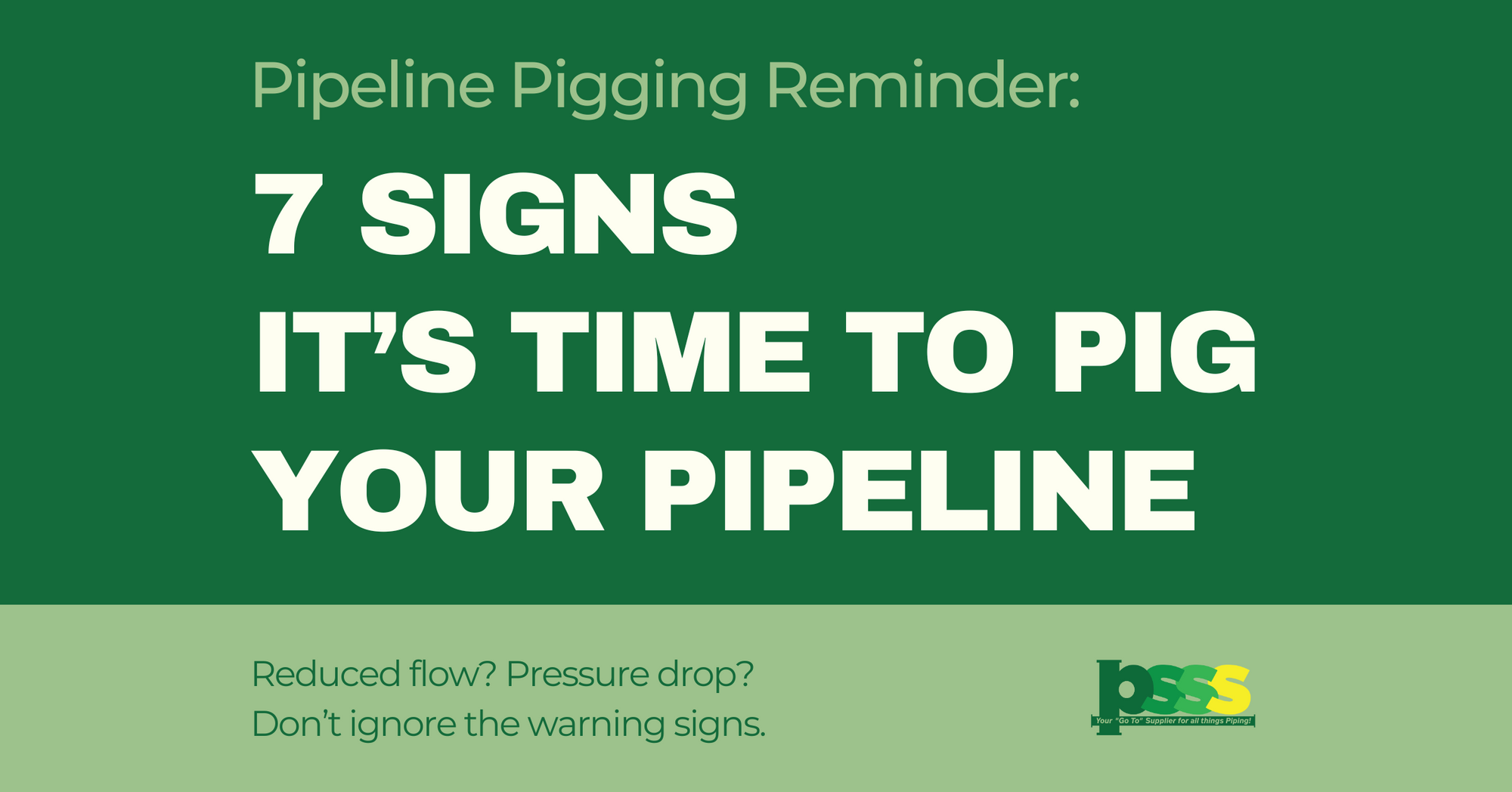Pigging plays a vital role in pipeline maintenance - helping to clean, inspect, and protect your infrastructure. But how do you know when it’s the right time to pig? Below are some of the most common indicators that pigging is due, or overdue.
1. Reduced Flow Rates
A noticeable drop in flow rate is often the first sign of a restriction inside the pipeline. Whether caused by wax, debris, scale, or product build-up, reduced flow efficiency often means it’s time to run a cleaning pig. Ignoring this early sign can lead to higher pressure demands and operational inefficiencies.
2. Increased Pressure Drop
If your pipeline is showing abnormal pressure readings or requires more power to maintain regular flow, internal blockages could be the culprit. Pigging helps restore optimal pressure by removing obstructions and minimising friction along the pipe wall.
3. Contaminated or Inconsistent Product
Changes in product quality - such as contamination, water ingress, or inconsistent output - can indicate issues within the pipeline. Batching pigs and separation pigs are designed to prevent product mixing and remove residues, helping restore product integrity.
4. Corrosion or Erosion Risks
Internal corrosion often stems from retained moisture, chemical residues, or scale build-up. Regular pigging can reduce these threats by removing corrosive agents and helping maintain a cleaner internal pipe surface. Neglecting pigging can speed up corrosion and shorten the life of your infrastructure.
5. Changes in Pump or Compressor Performance
If your system’s pumps or compressors are working harder than usual - or frequently tripping out - it could be due to pressure imbalance caused by build-up in the pipeline. Pigging helps reduce system strain, preventing equipment damage and improving overall reliability.
6. Scheduled Maintenance or Pre/Post-Commissioning
Pigging isn’t just reactive - it’s a critical step during commissioning, shutdown, and pre-maintenance procedures. Running a pig before or after maintenance ensures that debris is removed, product is flushed out, and the line is safe for future use.
7. Regulatory or Safety Compliance
In some industries, pigging is not just best practice - it’s a compliance requirement. Failing to conduct regular pigging could place your operation at risk of breaching regulations or safety standards, especially in oil, gas, water, and food-grade pipelines.
Final Thoughts
If any of these signs sound familiar, it’s likely time to run a pig through your line. Proactive pigging reduces downtime, lowers long-term costs, and protects your infrastructure from damage. At PSSS, we supply a wide range of pigs and pigging accessories to suit various pipeline systems - from foam and wire brush pigs to gauging and batching solutions.
Need Help Choosing the Right Pig?
Our team can help you select the right pig for your application, whether you're cleaning, inspecting, or maintaining a critical pipeline.
Contact us or give us a call today.

